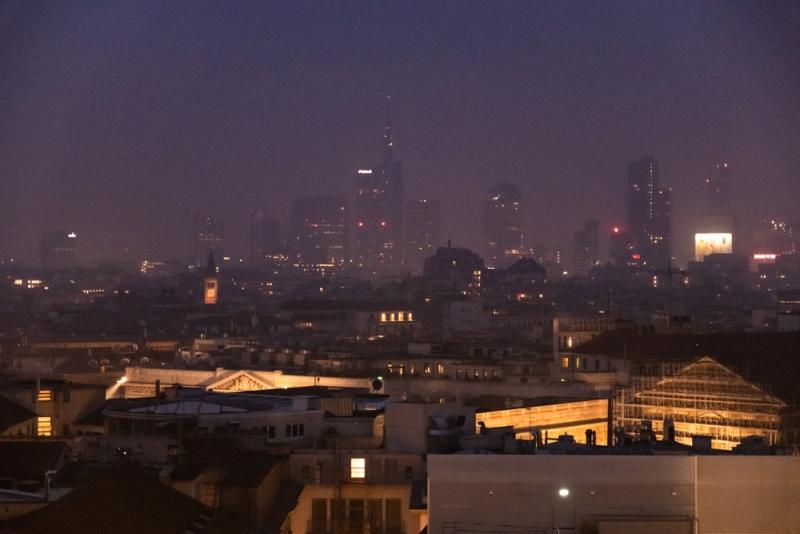Milan is hosting an international conference on air pollution February 29-March 1 — coincidentally just one week after one of the city’s worst moments for air pollution in recent memory.
The fifth edition of RespiraMi, held at the conference center of Fondazione Cariplo and co-hosted with the Policlinico of Milan, Imperial College London and Fondazione Menarini, will feature talks by scientists, representatives of the World Health Organization, and other experts alongside Giuseppe “Beppe” Sala, mayor of Milan, and Poppy Lyle, who oversees air pollution issues for the Greater London Authority. Up for discussion is the practicality of limited traffic areas (referred to in Italy as ZTLs) and whether Milan might benefit from a model similar to London’s Ultra Low Emission Zone, which was expanded by Mayor Sadiq Khan in 2023, though not without controversy.
Is air pollution really that bad in Milan?
Last week Milan made Italian and international headlines when the local air reached dangerously high levels of fine particulate matter (exceeding PM 2.5), said to be 24 times higher than the threshold set by the World Health Organization. The real media storm took off after the Swiss platform IQAir — which monitors air quality in real time in addition to developing and selling air-monitoring and purification products — briefly ranked Milan’s air quality the third worst in the world after Dhaka in Bangladesh and Lahore in Pakistan. (As of this writing, Milan has slipped down to slot 74 in the real-time rankings.)
Sala, the mayor of Milan, was quick to push back on the legitimacy of and media attention toward the IQAir classification; the latter included potentially misleading headlines about the Lombard capital being the “third most polluted city in the world.” (Milan currently ranks 531st in the same platform’s classification of average air pollution over time.)
“It’s the usual impromptu analysis made by a private entity,” Sala told reporters last week. “Let’s talk about serious things. This [IQAir data] is not a serious thing.”
On the larger issue of air pollution, however, Sala was less dismissive and acknowledged the work still to be done. “No one, neither Milan nor the region of Lombardy, has performed any miracles here,” he said. “I believe my administration has shown, also with divisive decisions we’ve made, that we want to do something about the environment. But we can’t spend our time on things like this.”
Sala went on to urge citizens to instead follow the data of Lombardy’s regional environmental protection agency ARPA and to challenge his administration’s decisions if needed, and called upon the Region of Lombardy for more assistance.
ARPA, for its part, called the IQAir classifications “unreliable” but confirmed last week that the local air had indeed surpassed PM 2.5. Officials immediately set limits on daytime traffic of gas-guzzling vehicles and on heating in homes in response.
What about the long term?
Experts say that Milan’s pollution is exacerbated by many factors: geographic location (it sits in a basin between mountains where air is easily trapped), lack of rainfall or strong winds to wash or blow the soot away, unseasonably high temperatures, and high levels of industrial and vehicle emissions.
The RespiraMi conference will take aim at the latter factor in particular, tackling the issue from a scientific perspective. London’s Ultra Low Emission Zone only allows free transit for vehicles that meet certain emissions standards: Euro 3 for motorcycles, Euro 4 for gasoline vehicles and Euro 6 for diesel vehicles. Those that don’t meet the standards must pay a toll to enter. Authorities have suggested a similar model could work well in Milan, given the limited size of the city.
Talks from the RespiraMi conference will be live streamed and available for later viewing on the Fondazione Menarini website.








